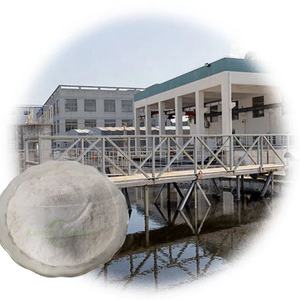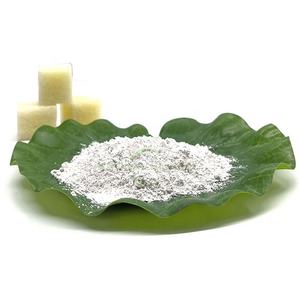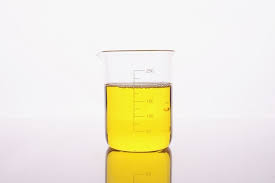Overview of Polyol/Polymer Polyol/Pop15% 25% 45% for Polyurethane Foam
Polymer surfactants, also known as polymeric surfactants or amphiphilic polymers, are high-molecular-weight compounds that combine the properties of traditional low-molecular-weight surfactants with the unique features of polymers. Unlike small molecule surfactants, polymer surfactants offer enhanced stability, improved solubility, and the ability to form more complex structures such as micelles, hydrogels, and vesicles. These macromolecules find applications across a wide range of industries due to their tailored structures and tunable properties, which allow for precise control over interfacial behavior and solution rheology.
Features of Polyol/Polymer Polyol/Pop15% 25% 45% for Polyurethane Foam
-
Molecular Weight and Structure: With a much higher molecular weight, polymer surfactants offer enhanced stability in harsh conditions and over prolonged periods compared to small molecule surfactants.
-
Tunability: The structure of polymer surfactants can be precisely engineered to include different functional groups, monomer sequences, and architectures, allowing for specific interactions and properties.
-
Multifunctionality: Apart from surface activity, they can also provide additional functionalities like thickening, rheology modification, and controlled release capabilities.
-
Self-Assembly: Capable of forming sophisticated self-assembled structures like micelles, hydrogels, and vesicles, which can encapsulate or release active ingredients in a controlled manner.
-
Environmental Compatibility: Many polymer surfactants are designed to be biodegradable and less toxic, making them suitable for eco-friendly applications.
-
Temperature and pH Responsiveness: Some polymer surfactants exhibit responsive behavior to changes in temperature or pH, enabling stimuli-responsive systems.

(Polyol/Polymer Polyol/Pop15% 25% 45% for Polyurethane Foam)
Specification of Polyol/Polymer Polyol/Pop15% 25% 45% for Polyurethane Foam
Polyol/Polymer Polyol (POP) with 15%, 25%, and 45% polymer web content is made use of to make polyurethane foam. These items are essential for adaptable and rigid foams in furnishings, insulation, automobile parts, and packaging. The polymer content changes the foam’s density, hardness, and load-bearing capacity. Greater polymer levels enhance strength and toughness.
The material looks clear or light yellow. It stays fluid at space temperature. The thickness rises with higher polymer material. POP 15% has reduced viscosity. POP 45% has much greater viscosity. The hydroxyl value procedures responsive groups for foam development. Values vary between 28-56 mg KOH/g. Reduced hydroxyl values indicate slower reactions. Greater worths speed up healing.
Water content remains below 0.1% for all grades. Reduced dampness protects against bubbles from falling down during foaming. The pH stays neutral (6.5-7.5) to avoid deterioration in tools. Thickness readjusts based upon polymer levels. POP 15% is lighter. POP 45% is denser for stronger foams.
POP 15% works for soft, light-weight foams like bed mattress toppers. It streams conveniently in mold and mildews. POP 25% balances soft qualities and assistance. It matches child seat and sofa paddings. POP 45% creates tough foams for durable uses. Instances consist of industrial cushioning or insulation panels.
Mixing proportions with isocyanates vary by polymer material. POP 15% needs much less isocyanate. POP 45% calls for more. Handling temperature levels remain in between 20-30 ° C. Storage space is in secured containers far from dampness. Life span is 6 months in dry, great problems.
Greater polymer qualities set you back extra. They supply much better mechanical efficiency. Lower grades save prices for standard applications. All variations meet security standards for flammability and discharges. They work with common foam machinery. Changes rely on thickness and reactivity. Testing tiny sets is suggested for brand-new formulations.

(Polyol/Polymer Polyol/Pop15% 25% 45% for Polyurethane Foam)
Applications of Polyol/Polymer Polyol/Pop15% 25% 45% for Polyurethane Foam
Polyol and Polymer Polyol (POP) with focus of 15%, 25%, and 45% are essential products for creating polyurethane foam. These substances determine the foam’s flexibility, density, and sturdiness. Various percentages suit various applications.
Polyol/POP 15% is usually used in soft, low-density foams. These foams are common in bed linens and furniture pillows. The reduced polymer content creates light-weight items. It permits cost-effective services without giving up convenience. Bed mattress toppers and cushion inserts benefit from this formulation.
Polyol/POP 25% balances adaptability and strength. This mid-range focus functions well in vehicle seating. Car seats need longevity to handle daily use. They additionally require convenience for lengthy drives. The 25% blend assistances both needs. Furnishings upholstery uses this grade also. Couches and office chairs obtain framework without feeling also stiff.
Polyol/POP 45% delivers high-density, stiff foams. These foams deal with hefty loads and resist wear. Building and construction and insulation markets depend on this focus. Roof covering panels and wall insulation usage 45% POP for thermal effectiveness. The foam’s strength helps preserve form under pressure. Packaging products for breakable items also use this grade. It protects products throughout delivery.
All three concentrations adjust to manufacturing procedures. They mix easily with isocyanates to develop foam. Adjusting the proportion changes the final product’s buildings. Greater polymer web content raises load-bearing ability. Lower portions prioritize gentleness and weight reduction.
The automobile sector uses these materials past seats. Door panels and headliners often contain polyurethane foam. The 25% and 45% grades give noise decrease and resonance damping.
In devices, polyurethane foam shields fridges and freezers. The 45% solution ensures power performance. It minimizes heat transfer to keep temperatures stable.
Shoes makers use softer foams for shoe soles. The 15% and 25% blends offer cushioning and rebound. This enhances convenience for everyday wear.
The convenience of Polyol/POP makes it essential across industries. Selecting the ideal percentage depends upon the application’s needs. Each quality supplies specific advantages customized to end-use demands.
Company Profile
SurfactantChina is a trusted global chemical material supplier & manufacturer with over 12-year-experience in providing super high-quality surfactant and relative products.
The company has a professional technical department and Quality Supervision Department, a well-equipped laboratory, and equipped with advanced testing equipment and after-sales customer service center.
If you are looking for high-quality surfactant and relative products, please feel free to contact us or click on the needed products to send an inquiry.
Payment Methods
L/C, T/T, Western Union, Paypal, Credit Card etc.
Shipment
It could be shipped by sea, by air, or by reveal ASAP as soon as repayment receipt.
5 FAQs of Polyol/Polymer Polyol/Pop15% 25% 45% for Polyurethane Foam
What is Polyol/Polymer Polyol used for in polyurethane foam?
Polyol and Polymer Polyol are chemicals used to make polyurethane foam. They create flexible or rigid foam. This foam is used in furniture cushions, car seats, insulation panels, mattresses. The foam structure depends on the Polyol type and mix ratio.
What is the difference between 15%, 25%, and 45% Polymer Polyol?
The numbers show how much polymer is in the Polyol. Higher percentages mean more polymer. More polymer makes foam denser and stronger. Use 15% for soft foam like pillows. Use 25% for medium support like sofa cushions. Use 45% for heavy-duty foam like industrial padding.
How should Polyol/Polymer Polyol be stored?
Store in a cool, dry place. Keep containers tightly sealed. Avoid moisture. Do not expose to extreme heat. Ideal storage temperature is 50-80°F. Check expiration dates. Use older stock first.
Are there safety precautions for handling Polyol/Polymer Polyol?
Wear gloves and goggles. Work in a ventilated area. Avoid skin contact. Do not inhale fumes. Wash hands after use. Spills should be cleaned quickly. Follow safety guidelines from the supplier.
How do I choose the right Polymer Polyol percentage?
Match the percentage to your foam needs. Soft, lightweight foam needs 15%. Medium support needs 25%. High-strength applications need 45%. Test small batches first. Talk to your supplier for specific advice.

(Polyol/Polymer Polyol/Pop15% 25% 45% for Polyurethane Foam)






